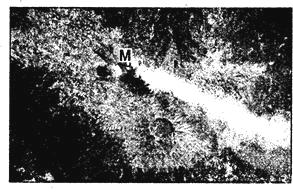While the ripples of America’s subprime-mortgage crisis have spread far and wide, Latin America—a place long associated with financial disaster—has remained improbably calm. Banks have reported no unpleasant surprises. Brazil and Peru have been blessed with coveted investment-grade ratings. Surprisingly, perhaps the fleetest country of all has been Argentina. Since it emerged from the financial crisis of 2001-02, it has been one of the world’s fastest-growing economies. It is expected to expand faster than most of its neighbors again this year.
Quite simply, it barely has any credit. Back when its economy virtually collapsed, the country suffered a run on its banks, followed by a freeze on withdrawals, and a massive currency devaluation. As a result, bank lending to the private sector shrivelled, from 23.8% of GDP in 2000 to 10.8% in 2003. Since then, it has rebounded to a piddling 13% ; by contrast, the ratio in Brazil was 36.5% in 2006. Almost all of these loans in Argentina are accessible only on a short-term basis.
Once its recovery began in June 2002, Argentina became a paradise for business. Unemployment of over 20% kept wages down, and the devaluation gave exporters an edge on foreign competitors. The ample productive capacity left idle by the crisis meant firms could expand without making big investments. And the windfall profits reaped by agricultural exporters, thanks to record commodities prices, enabled many of them to finance new projects out of earnings. Hence the economy could grow at almost 9% a year with little need for credit.
But such a lucky confluence of factors could not last. Starting in early 2005 ,.inflation picked up, a sign that the installed capacity was starting to limit output. Salaries and prices for raw materials increased sharply, cutting into profits. And farmers were particularly hard hit when the government nearly doubled the taxes in farm exports. Now, just as companies need to embark on big investments if they are to keep growing, their margins are no longer big enough to pay for the expansion and they need to borrow.
So, the time is ripe for the country’s financial system to recover. But a number of things are in the way. Foremost is Argentina’s business risk. Those in the informal economy (which represents over 40% of GDP) can neither save nor borrow legally, lest they become known to the taxmen. The rest remain cowed by memories of the crisis. Although Argentines have poured their savings into property, fuelling a construction boom, they still hold about four-fifths of their deposits abroad.
Inflation, fuelled by a public-spending binge, state-mandated wage increases, and a cheap currency, is not helping either. No one knows how high it is. The consumer-price index is doctored to keep the official rate below 10%, but private estimates suggest it is near 25%. Without a reliable index of inflation, lending is almost impossible, even for the medium term. And the central bank has kept interest rates ply negative in real terms, encouraging workers to spend their wages rather than to save.
what is the main idea of the text()
A. Credit does not play a role in economy
B. Banking sector and capital markets sometimes are not so important in economy
C. Argentina’s economy is the best one in Latin America
D. Argentina is a paradise for business

